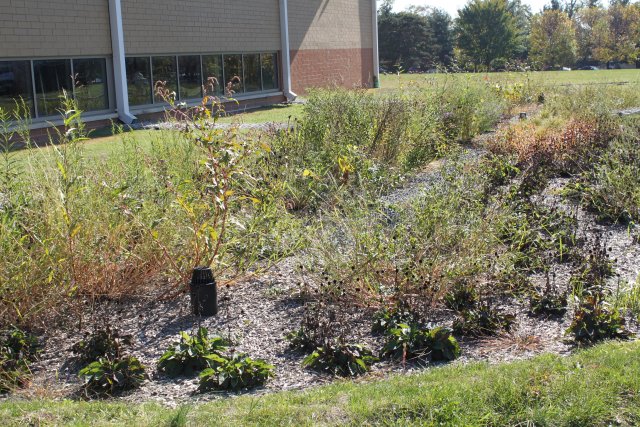Win-Win: Using Green Infrastructure to Maximize Ecosystem Benefits

Published May 9, 2022
As part of an agreement with the EPA to reduce contaminated stormwater overflows from reaching the Mississippi river, the City of St. Louis, Missouri has enacted a $100 million grant program to support the installation of rain gardens and other types of green infrastructure across the city.
Green infrastructure refers to practices that conserve, enhance, or mimic the natural ability of the land to absorb, pool, and cleanse stormwater and snowmelt runoff, potentially removing nutrients and pollutants that would otherwise end up accumulating in rivers and streams and whatever body of water they flow to. In addition to rain gardens, practices include green roofs, permeable pavement, wetlands (both natural and installed), bioswales, rain barrels, and more.
And as Science Matters has previously chronicled, EPA’s Office of Research and Development conducts and supports a robust research portfolio to identify and quantify the beneficial impacts of green infrastructure and urban greenspace.
The goal has always been to develop data and tools to support communities across the U.S., such as St. Louis, looking to tap the promise of green infrastructure as lower cost alternatives to the massive investments it would take to increase the capacity of existing sewer lines and water treatment facilities.
The work has taken on even more urgency as a changing climate increases the frequency of large storms and flooding events, compounding the volume of runoff and magnifying its impacts.
Today, Agency scientists and engineers are teaming up across disciplines to meet such challenges.
For example, EPA ecologist Matt Hopton and partners are demonstrating how St. Louis could leverage green infrastructure investments to not only improve stormwater management, but more equitably address a range of other community needs through environmental improvement projects. They developed a framework to maximize the social, economic, and environmental benefits of local ecosystems, and then conducted a case study in St Louis to illustrate how it can be applied.
To do so, the researchers conducted a spatial analysis combining environmental, social, and economic conditions across the City using census block data. They created a series of overlaying maps to pinpoint where green infrastructure improvements would provide the most additional benefits while addressing stormwater management needs.
“By focusing on these areas, St. Louis can address stormwater needs and provide other ecosystem services to underserved communities, ultimately improving their quality of life and protecting the environment, concurrently,” the authors note in their study, Leveraging ancillary benefits from urban greenspace – a case study of St. Louis, Missouri.
Hopton will present an overview of this work, and EPA engineers, Michael Borst and Thomas O’Connor, will discuss their field-based research projects during a May 18, 2022 “Green Infrastructure: Ecosystem Benefits and Applications” webinar, as part of EPA’s Water Research Webinar Series.
During the webinar presentations, Borst and O’Connor will focus on bioinfiltration from green infrastructure, which incorporates plants in water quality treatment. The two are leading efforts to monitor bioinfiltration to better understand the mechanisms that treat stormwater runoff and the conditions for optimal performance. They will discuss a project that is using embedded instrumentation to measure the water movement into, through, and out of a bioinfiltration system, and will also share experiences from a long-term study that is monitoring bioinfiltration planting media and plant growth.
The webinar will showcase how Agency researchers are working to advance green infrastructure techniques and better understand how communities can make decisions that offer the biggest returns on investments in environmental improvements.
